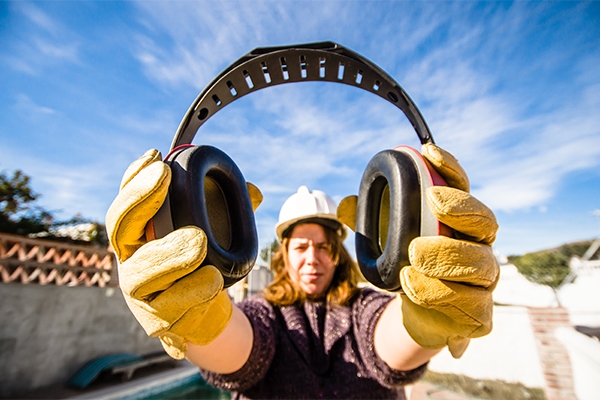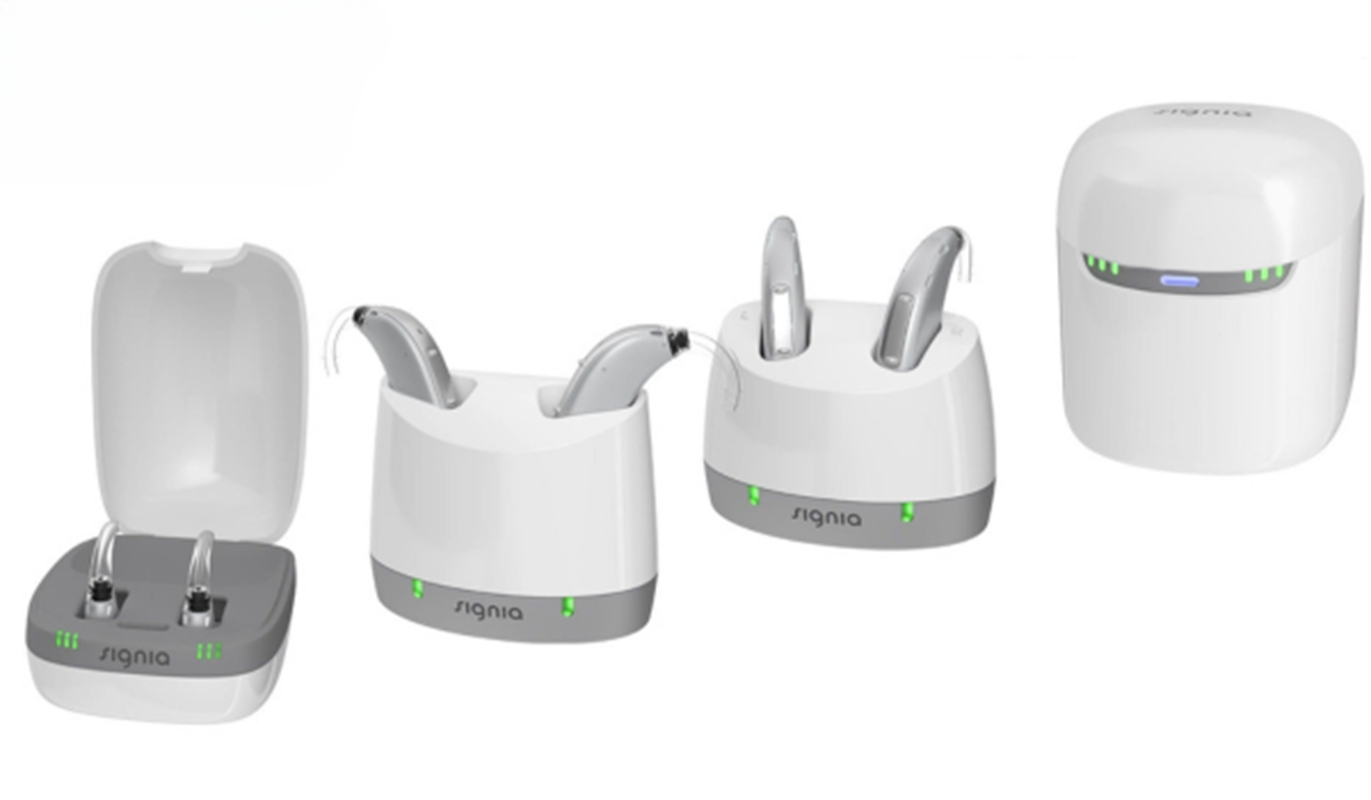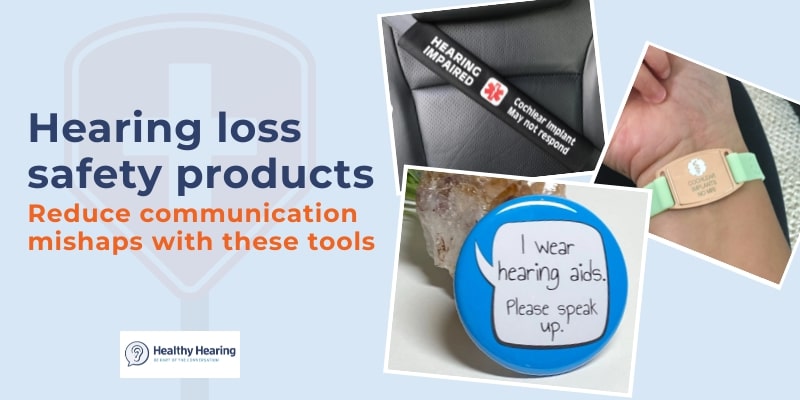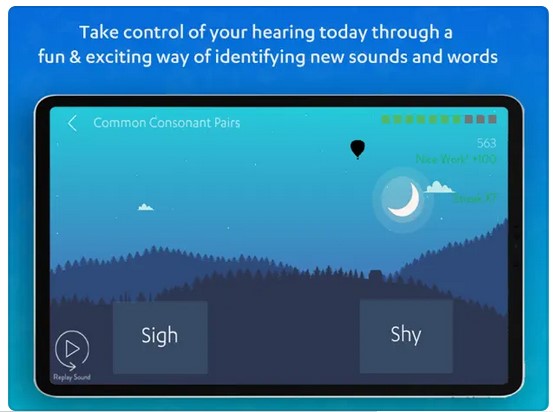Oh, if only getting a hearing aid was as easy as slipping it in your ear and stepping out of the audiologist’s office. Typically, there’s a few more steps involved: Your hearing care provider will want to confirm you understand how to use your new hearing aids, and that they’re properly calibrated and programmed for your needs.
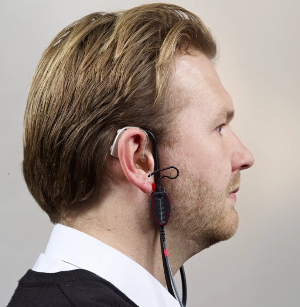
hearing aids are programmed correctly.
Photo courtesy Interacoustics
As part of the hearing aid fitting process, many hearing specialists and audiologists will also perform a real ear measurement (sometimes also referred to as “real ear verification”).
What is real ear measurement?
Simply put, this test confirms that the settings on your hearing aid are providing soft and loud sounds at the correct amplification. That is, instead of solely relying on your report of how things sound with the hearing aid on, real ear measurement provides a report on the sound levels you’re receiving.
“I think it’s one of the best measurements you can use,” clinical audiologist Abigail Possinger, who practices at Pine Tree Society, tells Healthy Hearing.
Your provider also will ask you questions about how things sound, and aim to get a sense of your hearing-related goals.
Importance of real ear measurements in hearing aid fittings
All that information—combined with the objective information on how the hearing aid works in your ear—can help your provider make sure the hearing aid is performing as it should.
That sets you up for a positive relationship with the devices. When people aren’t successful with hearing aids, Possinger says, it’s a sign they weren’t programmed properly at the get-go, and that there wasn’t validation to ensure they were working.
What happens during real ear measurement?
If your audiologist or hearing instrument specialist performs this procedure, here’s what you can expect:
Step 1: Before you even get there, the audiologist will calibrate the machine.
Once that’s all set, you’ll enter the room with the machine used for the measurement process. The audiologist will perform an otoscopy—that is, they’ll take a peek in your ears with a special viewing device.
“I'm looking in the patient's ears to make sure there isn't a ton of earwax or any debris in there,” Possinger says. If the probe tip (more on that in a second) is in wax, it won’t measure accurately, she says.
Step 2: Then, the audiologist will place the probe in your ear, about six millimeters (roughly a quarter of an inch) from your eardrum. Getting the probe tube in the right spot is key to accurate measurements, Possinger says.
This may feel like it tickles—Possinger compares it to when you have a hair in your ear. But it’s not painful or even very uncomfortable.
Step 3: With the probe in place, the audiologist will next place your hearing aids in. You’ll have both the probe and your new hearing aids in your ears.
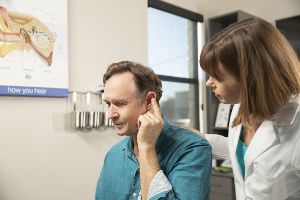
for input on how your hearing.
Step 4: Now it’s time to listen.
Possinger plays a clip of a man talking about carrots. But really, you can listen to anything: The goal is for your audiologist to measure the hearing aids’ ability, at the eardrum, to amplify soft, average, and loud speech.
During this step, expect that the audiologist may make some adjustments. They’ll be using the machine to confirm the amplification in your ear hits the targets. If it’s not, the hearing aids can be adjusted.
Step 5: You provide feedback. For this final step, Possinger says, “I'll remove the probe tip and just confirm with the patient that it sounds okay to them.”
The machine is helpful, but your experience matters, too. If the “loud” sounds are uncomfortably loud, for instance, the audiologist may make adjustments.
This whole process, from start to finish, on both ears, typically takes around 10 minutes, Possinger estimates. The real ear measurement can take a bit longer if many adjustments are required.
Benefits of getting real ear measurement
By doing real ear measurement “we're verifying more broadly that the hearing aid is working in the person's ear,” Possinger says. Not only does it turn on and amplify sound, but it amplifies sounds in a way that suits your hearing needs.
By using the machine, Possinger can add in measurements to individualize the fit of the hearing aid. It is useful for anyone, but especially people with severe to profound hearing loss.
Every ear is unique, Possinger notes. The size of your ear and the shape of the ear canal is different from the size and shape of your parents or sibling’s. Through real ear measurement, audiologists can confirm that sounds in all pitches are properly amplified for your specific ears.
The size of your ear and the shape of the ear canal is different from the size and shape of your parents or sibling’s. Through real ear measurement, audiologists can confirm that sounds in all pitches are properly amplified for your specific hearing needs.
Are there any drawbacks?
Not really: Sometimes people feel a bit nervous when they see the probe tip, Possinger says. A little explanation and brief practice session—so the person can get comfortable with the feeling of having a probe in the ear—can typically ease concerns, Possinger says.
And it does take a bit of time, Possinger notes. Plus, the machine is somewhat large and bulky, so from an audiologist perspective, it can be a bit of a pain to lug it from room to room.
There are other tests available to audiologists. For instance, audiologists can do aided testing, checking your hearing with the hearing aid on in the sound book, Possinger says. But ultimately, doing real ear measurement helps confirm that the hearing aid works just as it should, she says.
“I always advocate for it,” Possinger says. “It’s an easy, objective way to tell if the hearing aids are working.”
The above is the interpretation of Real Ear Measurement: Why It's Essential for Hearing Aids provided by Chinese hearing aid supplier Shenrui Medical. Link https://www.srmcm.com/Blog/Real_Ear_Measurement_Why_It_s_Essential_for_Hearing_Aids.html of this article is welcome to share and forward. For more hearing aid related information, please visit Blog or take a look at our Hearing aids products






